Day 2 :
- Imaging and Image Proceesing
Session Introduction
Ching Y. Suen
Director, Centre for Pattern Recognition and Machine Intelligence
Concordia University, Canada
Title: Judging Female Facial Beauty by Computer

Biography:
Dr. Ching Y. Suen is the Director of CENPARMI and the Concordia Chair on AI & Pattern Recognition. He received his Ph.D. degree from UBC (Vancouver) and his Master's degree from the University of Hong Kong. He has served as the Chairman of the Department of Computer Science and as the Associate Dean (Research) of the Faculty of Engineering and Computer Science of Concordia University. Prof. Suen has served at numerous national and international professional societies as President, Vice-President, Governor, and Director. He has given 45 invited/keynote papers at conferences and 195 invited talks at various industries and academic institutions around the world. He has been the Principal Investigator or Consultant of 30 industrial projects. His research projects have been funded by the ENCS Faculty and the Distinguished Chair Programs at Concordia University, FCAR (Quebec), NSERC (Canada), the National Networks of Centres of Excellence (Canada), the Canadian Foundation for Innovation, and the industrial sectors in various countries, including Canada, France, Japan, Italy, and the United States. Dr. Suen has published 4 conference proceedings, 12 books and more than 495 papers, and many of them have been widely cited while the ideas in others have been applied in practical environments involving handwriting recognition, thinning methodologies, and multiple classifiers. Dr. Suen is the recipient of numerous awards, including the Gold Medal from the University of Bari (Italy 2012), the IAPR ICDAR Award (2005), the ITAC/NSERC national award (1992), and the "Concordia Lifetime Research Achievement" and "Concordia Fellow" Awards (2008 and 1998 respectively). He is a fellow of the IEEE (since 1986), IAPR (1994), and the Academy of Sciences of the Royal Society of Canada (1995). Currently, he is the Editor-in-Chief of the journal of Pattern Recognition and an Adviser or Associate Editor of 5 journals.
Abstract:
Beauty is one of the foremost ideas that define human personality. In this talk, various approaches to the comprehension and analysis of human beauty are presented and the use of these theories is outlined. Each set of theories is translated into a feature model that is tested for classification. Selecting the best set of features that result in the most accurate model for the representation of the human face is a key challenge. This research introduces the combined use of three main groups of features for classification of female facial beauty, to be used with classification through support vector machines. It concentrates on building an automatic system for the measurement of female facial beauty. The approach used is one of analyses of the central tenets of beauty, the successive application image processing techniques, and finally the usage of relevant machine learning methods to build an effective system for the automated assessment of facial beauty. Plenty of examples will be illustrated during the talk.
Frédéric Cointault
Agrosup Dijon – UMR Agroécologie, France
Title: Image acquisition and processing for Precision Farming applications
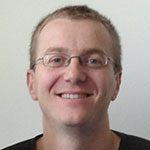
Biography:
Frédéric Cointault gets his Ph-D in Instrumentation and Image Computing (3I) of the University of Burgundy in 2001, and his "accreditation to supervise research" in 3I in 2010. He works since 2002 as an associate professor at Agrosup Dijon, one of the seven French Agronomic and Agri Food Higher Educational Institution. He is the Head of an international Master Degree in Biosystems Engineering and Economics, and is the national co-head of a Joint Technological Network based on Agricultural Engineering and ICT for Agroecology. His research are turned on the development of image acquisition tools (3D, high speed, NIR …) and image processing methods (color/texture information, motion estimation …) for plant phenotyping, determination of diseases on leaves and grapes, spraying and spreading characterization, and more generally for precision agriculture and viticulture. He is also member of the ISPA (International Society of Precision Agriculture) and of the IFS (International Fertiliser Society).
Abstract:
Initially developed for technical industrial sectors such as medicine or aeronautics, imaging technics are more and more used since 30 years in agriculture and viticulture. The development of acquisition tool and the decreasing of the calculation time allowed using imagery in laboratory under controlled conditions. At the beginning of the 90’s, the concept of Precision Farming has been developed in the USA, considering a field as a heterogeneous area needing different input in terms of fertiliser or protection product. In the same time, the aperture of the GPS system for civil applications has allowed the development of remote sensing domain. Combining GPS information and imagery conducted also to the emergence of proxy-detection applications, in agriculture and viticulture domains, in order to optimize crop management. A localized crop management needs the use of new technologies such as computing, electronics and imaging, and the conception of a proxy-detection system is motivated by the need of better resolution, precision, temporality and lower cost, compared to remote sensing. The use of computer vision techniques allows obtaining this information automatically with objective measurements compared with visual or manual acquisition. The main applications covered by the computer vision in agriculture are tied to the crop characterization (biomass estimation, leaf area, volume, height of the crop, disease determination etc), the aerial or root phenotyping in the fields or in specific platforms and the understanding of spraying and spreading processes. This presentation will explain the different imaging systems used to characterize the previous parameters, in 2D or 3D. It will also give some details on the dedicated image processing methods developed, related to motion estimation, focus information, pattern recognition and multi –hyper spectral data.
Jorge Sánchez
Assistant Researcher, National Scientific and Technical Research Council
Title: Image understanding at a large-scale: from shallow to deep and beyond
Biography:
Dr. Jorge Sánchez is an Assistant Researcher at the National Scientific and Technical Research Council (CONICET). He received his Dr. of Engineering degree from the National University of Córdoba (UNC), Argentina, in 2012. He is currently an Adjoin Professor at the UNC's Faculty of Mathematics, Astronomy and Physics. Most of his research is focused on developing models and representation that can be applied to large-scale image analysis problems. He participated in the ImageNet large-scale Visual Recognition Challenge (ILSVRC) in 2010 and 2011, obtaining and honourable mention and first place, respectively. His research interest includes image classification, object recognition and large-scale problems in computer vision.
Abstract:
The analysis and understanding of images at a large-scale is a problem which has received an increasing attention in the past few years. The rapid growth on the number of images and videos online and the availability of datasets consisting on hundreds of thousands or even million of manually annotated images, impose exciting new challenges to the computer vision community as a whole. One of the fundamental problems on visual recognition, i.e. the way we represent the images and its content, is witnessing a paradigm shift towards a new class of models trying to exploit the vast amount of available data as well as the fast growth and widespread use of high-performance computing systems.
In this talk, I will discuss different models that has been proposed in the computer vision literature to encode the visual information over the past few years, from the early shallow models to the more recent deep architectures. I will focus on the large-scale image annotation problem, i.e. the task of providing semantic labels to images when the number of those images and/or the number of possible annotations is very large, and its connection with other problems of growing practical interest.
Ines Aparecida
Sao Paulo State University, Brazil
Title: Multi-Scale Local Mapped Pattern for Spoof Fingerprint Detection
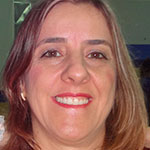
Biography:
Dr. Ines Boaventura graduate at Mathematics from Sao Paulo State University , UNESP, Brazil, master’s at Computer Science and Computational Mathematics and Ph.D at Electrical Engineering from University of Sao Paulo (USP). She has experience in Computer Science, focusing on Graphical Processing (Graphics), and acting on the following subjects: Biometrics, Image Processing, and Computer Vision. She is a full-time professor and head of the Department at Department of Computer Science and Statistics at UNESP, campus of Sao Jose do Rio Preto, Sao Paulo, Brazil. In 2011-2012 she was a visiting researcher at PRIP Laboratory –CSE –Michigan State University.
Abstract:
In this talk we will address the problem of detecting spoofings using image processing and pattern recognition techniques. Within this context, we have a widely used texture extractor, the Local Binary Pattern (LBP) proposed in 1996. In 2014, multi-scale versions of this method were presented, referred to as MSLBP (Multi-Scale Local Binary Pattern). In the same year the LMP (Mean Local Mapped Pattern) technique, equally based on LBP, was also introduced. These new techniques offered quite promising results. We will show a new technique joining both previous methods, that is, the LMP and the MSLMP, herein referred to as MSLMP (Multi-Scale Mean Local Mapped Pattern). The proposal of this new approach is to attenuate noisy actions often occurring in digital images with the use of applications in charge of smoothing high frequencies found in the neighborhood of a pixel. Forgeries are detected through the analysis of micropatterns extracted from fingerprint images. In the proposed method, the micropatterns are responsible for representing the most abstract features, which describe properties differing forged from genuine fingerprints. The experiments carried out so far suggest that the technique presented provides detections with higher performance than the results presented in the state-of-the-art research in the specialized scientific literature.
Walid El-Shafai
Menoufia University, Egypt
Title: Joint Adaptive Pre-processing Resilience and Post-processing Concealment Schemes for 3D Video Transmission
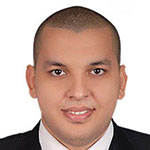
Biography:
Walid El-Shafai was born in Alexandria, Egypt, on April 19, 1986. He received the B.Sc degree in Electronics and Electrical Communication Engineering from Faculty of Electronic Engineering (FEE), Menoufia University, Menouf, Egypt in 2008 and M.Sc degree from Egypt-Japan University of Science and Technology (E-JUST) in 2012. He is currently working as a Teaching Assistant and Ph.D. Researcher in ECE Dept. FEE, Menoufia University. His research interests are in the areas of Wireless Mobile and Multimedia Communications, Image and Video Signal Processing, 3D Multi-view Video Coding, Error Resilience and Concealment Algorithms for H.264/AVC and H.264/MVC Standards. He is an Android Certified Application Developer and Android Certified Application Engineer, Android Certified Application Trainer Android ™ (Advanced Training Consultants) ATC. He is a reviewer in different international journals like IEEE, Springer, Elsevier and others. He is currently a lecturer at Faculty of Electronic Engineering (FEE), Menoufia University, Menouf, Egypt.
Abstract:
3D Multi-View Video (MVV) is multiple video streams shot by several cameras around a single scene simultaneously. In Multi-view Video Coding (MVC), the spatio-temporal and interview correlations between frames and views can be used for error concealment. 3D video transmission over erroneous networks is still a considerable issue due to restricted resources and the presence of severe channel errors. Efficiently compressing 3D video with low transmission rate, while maintaining a high quality of received 3D video, is very challenging. Since it is not plausible to re-transmit all the corrupted Macro-Blocks (MBs) due to real time applications and limited resources. Thus it is mandatory to retrieve the lost MBs at the decoder side using sufficient post-processing schemes, such as Error Concealment (EC). Error Concealment (EC) algorithms have the advantage of improving the received 3D video quality without any modifications in the transmission rate or in the encoder hardware or software. In this presentation, I will explore a lot of and different Adaptive Multi-Mode EC (AMMEC) algorithms at the decoder based on utilizing various and adaptive pre-processing techniques, i.e. Flexible Macro-block Ordering Error Resilience (FMO-ER) at the encoder; to efficiently conceal and recover the erroneous MBs of intra and inter coded frames of the transmitted 3D video. Also, I will present extensive experimental simulation results to show that our proposed novel schemes can significantly improve the objective and subjective 3D video quality.
Nishant Shrivastava
Jaypee University, India
Title: Content Based Image Retrieval: Approaches, Challenges & Future Directions
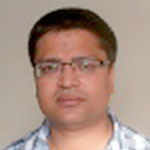
Biography:
Dr. Nishant Shrivastava is working as Assistant Professor in the department of computer science and Engineering, Jaypee University Anoopshahr, India. He has been awarded PhD in computer science and Engineering from Jaypee University of Engineering and Technology, Guna, India. His research work is based on development of efficient techniques for Image Retrieval and Classification using semantic visualization of image. He has teaching and research experience of about 11 years in various reputed organizations. He is a life time member of ISTE and IEEE. Focussing on Image Retrieval research, Dr. Shrivastava has published many papers in reputed international journals and conferences. He has been appointed as reviewer and member of editorial board of various reputed international conferences and journals.
Abstract:
Image retrieval and classification is the major field of research in the area of image processing and computer vision. Early image retrieval systems search the images based on keyword found in their surrounding text. These Text Based Image Retrieval Systems (TBIRs) require manual annotation of images in advance. However, annotation of images is a very tedious task that requires a lot of time and often produces misleading results. To overcome this limitation of TBIR, visual content of the images is employed to search the image. System utilizing this concept for searching, navigating and browsing images from large image databases is termed as Content Based Image Retrieval (CBIR) system. A CBIR system is more successful and close to the human perception as it can search the similar images based on the visual content of a given query, image or sketch. Inherently, a typical CBIR system involves task like query formulation, pre-processing, feature extraction, multidimensional indexing, similarity computation, relevance feedback and output similar images as per user requirement. This presentation will provide a deep insight in to the various tools and techniques used in CBIR system. The conceptualization and implementation of each of the CBIR task together with the implementation of complete system, starting from simple to most complex ones, will be discussed in detail. Further, my contribution in the field of image retrieval and classification with verified results and example query will be presented and compared with the existing state-of-the-art techniques. Finally, future work, problems and challenges in developing an efficient CBIR system will be discussed with their suggested solutions. The main goal of the presentation is to arouse the interest of audience and attract the potential researchers towards the fascinating field of image retrieval.
- Computational Photography

Biography:
Kari Pulli is VP of Computational Imaging at Light. Previously, he led research teams at NVIDIA Research (Senior Director) and at Nokia Research (Nokia Fellow) on Computational Photography, Computer Vision, and Augmented Reality. He headed Nokia's graphics technology, and contributed to many Khronos and JCP mobile graphics and media standards, and wrote a book on mobile 3D graphics standards. Kari holds CS degrees from Univ. Minnesota (BSc), Univ. Oulu (MSc, Lic. Tech.), Univ. Washington (PhD); and an MBA from Univ. Oulu. He has taught and worked as a researcher at Stanford, Univ. Oulu, and MIT.
Abstract:
Nowadays, Monitoring roadways to ensure safety of vehicles and pedestrians is a challenging problem because of the high volume of traffic. The development of intelligent and omnipresent systems for automatic monitoring of modern roadway becomes indispensable. With the technological advances in sensors design, communication, computer vision and distributed inferences are stimulating the development of new innovative and intelligent techniques that will help transportation agencies and enforcement officers to ensure safety and improve traffic flow. Visual sensor network technology is seen to play an important role in such application. However, the aggregation and the interpretation of distributed visual information in real-time is still a biggest challenge. The complexity of such operations is mainly caused by the presence of multilevel uncertainty. Uncertainty in trajectory estimation of vehicles, visual signatures of vehicle and pedestrian, travelling time across visual-sensors, poses, etc. This explosion of uncertainty will certainly affect the global decision of the automated roadway monitoring systems. The major question should be asked today is how we can quantify this explosion of uncertainty to improve the decisional process of the automated visual monitoring systems? Through this talk, I will attempt to answer this question through the presentation of new approaches that integrate a combination of multi-level distributed artificial intelligence, dynamic computer vision techniques and filtering theory.
- Computer Vision
Session Introduction
Fouad Bousetouane
RTIS-Laboratory
University of Nevada Las Vegas
USA
Title: Uncertainty Quantification in Computer Vision Problem: Application to Transportation
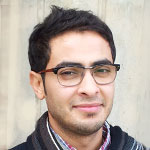
Biography:
Dr. Fouad Bousetouane, Received his BSc in computer science and mathematics, in 2008 and Master by Research degree in Artificial Intelligence and Pattern Recognition from Badji Mokhtar University, Algeria, in 2010. He obtained his PhD in Artificial Intelligence and Computer Vision from UBMA-University (Algeria), co-supported by LISIC-Laboratory (France) in 2014. He is valedictorian, member of International Association of Computer Science and Information Technology (IACSIT) and Computer Vision Foundation (CVF). He collaborated with researchers from CNRS-Lille (France) and LISIC-laboratory (France) for developing computer vision algorithms for multi-object tracking, handoff management, dynamic/static occlusion handling and re-identification across multi-sensor networks. He is Co-Founder of Robotics and Intelligent Computing Startup. He authored many technical articles in machine learning, computer vision, satellite image processing, and served as a reviewer for top ranked journals and conferences including ( IET-Image Processing journal, IEEE transaction journal on Intelligent Transportation Systems, IEEE-IROS2012 and IEEE-ITSC-2015). Currently, he is a postdoctoral researcher in computer vision and Artificial intelligence at Real-Time Intelligent Systems (RTIS) laboratory, University of Nevada, Las Vegas, USA. His research interests include artificial intelligence, pattern recognition, probabilistic graphical models and Bayesian computation, machine learning, computer vision and deep learning.
Abstract:
Nowadays, Monitoring roadways to ensure safety of vehicles and pedestrians is a challenging problem because of the high volume of traffic. The development of intelligent and omnipresent systems for automatic monitoring of modern roadway becomes indispensable. With the technological advances in sensors design, communication, computer vision and distributed inferences are stimulating the development of new innovative and intelligent techniques that will help transportation agencies and enforcement officers to ensure safety and improve traffic flow. Visual sensor network technology is seen to play an important role in such application. However, the aggregation and the interpretation of distributed visual information in real-time is still a biggest challenge. The complexity of such operations is mainly caused by the presence of multilevel uncertainty. Uncertainty in trajectory estimation of vehicles, visual signatures of vehicle and pedestrian, travelling time across visual-sensors, poses, etc. This explosion of uncertainty will certainly affect the global decision of the automated roadway monitoring systems. The major question should be asked today is how we can quantify this explosion of uncertainty to improve the decisional process of the automated visual monitoring systems? Through this talk, I will attempt to answer this question through the presentation of new approaches that integrate a combination of multi-level distributed artificial intelligence, dynamic computer vision techniques and filtering theory.
Junaid Baber
University of Balochistan
Pakistan
Title: Automatic Image Segmentation for Large Collections
Biography:
Junaid Baber is a Assistant Professor at the University of Balochistan. He received the M.S. and Ph.D. degrees in Computer Science from the Asian Institute of Technology in 2010 and 2013, respectively. He spent 10 months as a research intern at the National Institute of Informatics in Tokyo, Japan. His research interests include image processing, multimedia mining, and machine learning. He is a member of the IEEE. He also served as TPC and reviewer for many conferences and impact factor Journals.
Abstract:
Image segmentation is one of the most significant tasks in computer vision. Since automatic techniques are hard for this purpose, a number of interactive techniques are used for image segmentation. The result of these techniques largely depends on users feedback. It is difficult to get good interactions for large databases. On the other hand, automatic image segmentation is becoming a significant objective in computer vision and image analysis. We propose an automatic approach to detect foreground. We are applying Maximal Similarity Based Region Merging (MSRM) technique for region merging and using image boundary to identify foreground regions. The results confirm the effectiveness of the approach. This approach reveals its effectiveness especially to extract multiple objects from background.
Biography:
Adrien Gaidon is a Research Scientist at the Xerox Research Centre Europe (XRCE) in the Computer Vision group. His research interests lie in the fields of Computer Vision and Machine Learning, with a focus on automatic video understanding (e.g. behavior recognition, motion analysis, event detection) and object recognition. Adrien graduated from the ENSIMAG engineering school and obtained an MSc in Artificial Intelligence from Université Joseph Fourier, Grenoble, France, in 2008. That year, he participated in the team that won the PASCAL VOC Computer Vision competition. He, then, worked as a doctoral candidate at the Microsoft Research - Inria joint center in Paris, and in the LEAR team at Inira Grenoble under the supervision of Zaid Harchaoui and Cordelia Schmid. He got his PhD from Université de Grenoble in 2012 and joined XRCE as a permanent member in 2013.
Abstract:
Complex activities, e.g., pole vaulting, are composed of a variable number of sub-events connected by complex spatio-temporal relations, whereas simple actions can be represented as sequences of short temporal parts. In this paper, we learn hierarchical representations of activity videos in an unsupervised manner. These hierarchies of mid-level motion components are data-driven decompositions specific to each video. We introduce a spectral divisive clustering algorithm to efficiently extract a hierarchy over a large number of tracklets (i.e., local trajectories). We use this structure to represent a video as an unordered binary tree. We model this tree using nested histograms of local motion features. We provide an efficient positive definite kernel that computes the structural and visual similarity of two hierarchical decompositions by relying on models of their parent-child relations. We present experimental results on four recent challenging benchmarks: the High Five dataset [Patron-Perez et al, 2010], the Olympics Sports dataset [Niebles et al, 2010], the Hollywood 2 dataset [Marszalek et al, 2009], and the HMDB dataset [Kuehne et al, 2011]. We show that per video hierarchies provide additional information for activity recognition. Our approach improves over unstructured activity models, baselines using other motion decomposition algorithms, and the state of the art.
- Human-Computer Interaction
Session Introduction
M. Ali Mirzaei
CNRS researcher Paris Institute of Technology, Paris, France
Title: Acceleration of Image Processing on FPGA-GPU Systems and the Effect of the Velocity on the Sensory Conflict
Biography:
M.Ali Mirzaei is working as a CNRS reseacher in ATLAS Experiment, FTK project and AMchip team in CERN. He has completed his PhD in signal processing in Paris Institute of Technology. He did his MSc in Imperial College London in Electronics engineering. He has published more than 30 papers in reputed journals and conferences and has been serving as an editorial board member/reviewer of IEEE journals.
Abstract:
Nowadays, acceleration of image processing algorithm is widely used in different imaging and display systems. FPGA and GPU are playing extremely important role in the accelerator architecture. However, over/under speed might create a sensory conflict. Sensory conflict in the oculo-vestibular dynamic has been a very fundamental research question and affected several domains including engineering, aviation, emerging technologies, car industries and so on and considered as a serious industrial challenge in display technology and advance read-time image processing systems. Finding a practical solution for the sensory conflict in the real/virtual environment is essential. Because, based on this solution a set of efficient interaction (navigation/ manipulation) interfaces maybe be proposed. Reliable research results will influence directly technologies such as aviation (flight simulators, drone land base control, unmanned vehicle control and navigation), car industry (car simulator, manufacturing, assembling and disassembling of comportment), display systems, robotics and training. In addition, it can improves the quality of the cyber product such as games, HCI and automation industries. Different teams and research groups have inquired this problem all across the world. Researchers have studied the problem from various point of view including psychology, psychophysiology, neuroscience, computer vision, Man Machine Interface (MMI), Human Computer Interaction (HCI), user study, biology, robotics and telecommunication and so on. This presentation focuses on the sensory conflict problem from modeling, signal processing and computational neuroscience perspective, however the main focused will be on signal processing. Simply, it will be shown how the speed of visual flow, texture and the distance from visual flow can affect sensory conflict in a synthetic environment. Then the result will be verified using modeling and experimental data analysis. Nearly entire display system and test-bench was developed on windows platform and NVidia Quadroplex GPUs. The detection filters were developed and accelerated on FPGA. To simplify the development procedure for the newcomer developer and future researcher, all the GPU Kernels, C++ code, MATLAB engine and wireless network telecommunication and interfacing toolboxes were wrapped under JavaScript in the software platform which makes development very fast and easy. Enormous efforts, debugging, software tests were made for building such a user friendly and handy platform.
Biography:
Syed Zain Masood holds a PhD in Computer Science, with emphasis in the field of Computer Vision and Machine Learning, from University of Central Florida (UCF). He has expertise pertaining to action/gesture recognition, object detection, shadow detection/removal, face recognition and computational photography. Most of his PhD work is focused on recognizing actions in complex scenes as well as achieving a balance between accuracy and latency for action recognition for Human Computer Interaction (HCI) environments. He is one of the co-founders of a startup company called Sighthound, Inc. that deals with intelligent surveillance software for residential use. He heads the research department and is focused on tasks like object detection, face detection and recognition, tracking, etc.
Abstract:
An important aspect in designing interactive, action-based interfaces is reliably recognizing actions with minimal latency. High latency causes the system’s feedback to lag behind user actions and thus significantly degrades the interactivity of the user experience. This talk presents algorithms for reducing latency when recognizing actions. We use a latency-aware learning formulation to train a logistic regression-based classifier that automatically determines distinctive canonical poses from the data and uses these to robustly recognize actions in the presence of ambiguous poses. We introduce a novel (publicly released) dataset for the purpose of our experiments. Comparisons of our method against both a Bag of Words and a Conditional Random Field (CRF) classifier show improved recognition performance for both pre-segmented and online classification tasks. Additionally, we employ GentleBoost to reduce our feature set and further improve our results. We then present experiments that explore the accuracy/latency trade-off over.
- Game Design and Development
Session Introduction
Jingtian Li
University of the Incarnate Word, School of Media & Design San Antonio, Texas, USA
Title: Creative Texturing and Evolutionary Tools
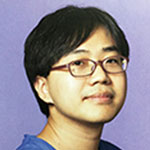
Biography:
Jingtian Li is an individual 3D Character Artist and Animator, he is also Assistant Professor of 3D Animation & Game Design (http://www.uiw3d.com) in the School of Media & Design at the University of the Incarnate Word in San Antonio. He also have been working in a variety of animation studios like Beijing Daysview Digital Image Co, Passion Picture NYC. Jingtian holds an MFA in Computer Animation form School of Visual Arts in New York City, and also a BFA of Digital Media from China Central Academy of Fine Arts.
Abstract:
Texturing is one of the most important part of 3D animation and game industry, in the past 5 years, driven by the industry, a new set of tools emerged to enhance our working pipeline in texturing. Now, instead of Adobe Photoshop, there are plenty of evolutionary tools is being used in the industry, like The Foundry Mari, Allegorithmic Substance Designer, Allegorithmic Substance Painter, Quixel DDO. With dynamic layers and masks, multi-Channel painting, particle brushes, edge and curvature detection, position map, PBR shader and rendering, real world capture, multiple map baking options, not only the working pipeline are changed, but also the level of details, the complexity of channels, the network of shading are also evolving, the time taken to texture is reduced, texturing has never been so easy, exciting and creative. With modern game engine and renderers like Epic UE4 and Solid Angle Arnold, create mind blowing graphics is never been so efficient and enjoyable.
Meng-Dar Shieh and Wu Ssu Yi
Industrial Design Department, National Cheng Kung University, Taiwan
Title: The Research of the Correlation between Camp Board Game Character Mechanic and the Players’ Emotional Responses-Using the Lupus of Tabula as an Example

Biography:
Meng-Dar Shieh, Associate Professor, Department of Industrial Design, National Cheng Kung University, Tainan, Taiwan. He got his Ph.D. (1990) and Master degrees (1986) in Mechanical Engineering, University of Florida, USA. His research interests include Neural Network, Kansei Engineering, Support Vector Machines, Concurrent Engineering, Computer Graphics Simulation, Virtual Reality, Computer Aided Design and Manufacturing, Product Design, System Integration and Networking, Robotics in Medical Applications, Quality Control, Digital Design, E-commerce.
Abstract:
People love camp board games because of several reasons, including a highly player-targeted feature, the uncertainty of identity trust and fascinating stories. However, designing character’s ability and function is an essential part of many camp board games. Upon observing players’ emotions caused by the characters they use, we can measure if players are highly interested in this game and verify if players’ emotional reactions accord with the ones that designers have expected when designing the game. Therefore, founding a set of inspection steps for game rules is the current issue that needs further development in board games. This study focuses on player’s experience of using hidden characters in camp board games so that we can explore the impacts on players’ emotions when they act as different characters. The correlation between players’ emotions and events they meet can be analyzed via physiological measurement and video content analysis. These methods can quantify the player’s emotions caused by asymmetric role mechanics. By observing player’s physiological changes, we would know if the game mechanic design has caused expected results. This method applies to camp board games with hidden characters, helps game development teams inspire directions for futuristic products and improvements towards current products and elevates player’s satisfaction towards board games.
Masasuke Yasumoto
Kanagawa Institute of Technology, Japan
Title: Shadow Shooter - All-Around Shooter Game with E-Yumi 3D
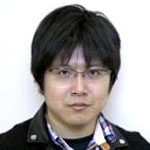
Biography:
Assistant professor in Kanagawa Institute of Technology since 2015. Masasuke Yasumoto born 1980 in Japan, he received Ph.D. (film and new media) from Tokyo University of the Arts in 2010. He was an assistant professor in Tokyo University of Technology from 2011 to 2015. He is an interactive artist, researcher and engineer working at the intersection of art and science. His work covers a range of disciplines including interactive arts, computer graphics, physical interface, mobile applications and video game.
Abstract:
“Shadow Shooter” is a VR shooter game. It uses a bow interface called “e-Yumi 3D” and real physical interactive content that changes a 360-degree all-around view in a room into a virtual game space. This system was constructed by developing my previous interactive “The Light Shooter” content based on “The Electric Bow Interface”. The Light Shooter uses a real traditional Japanese bow de vice - the Electric Bow Interface. This device recognizes all directions that arrows are shot in and projects real-scale targets. However, it displays directions only with a standing projector; thus, users cannot get a strong sense of reality all around them. Shadow Shooter expands the virtual game space to all the walls in a room, however, it does not require large-scale equipment such as multiple projectors. It only requires the e-Yumi 3D device, it is based on an archery bow and also includes a mobile laser projector, a 9-axis sensor, strain gauges, micro computer and its control board, and a Windows PC. This system consists of shooting content that is based on the concept of searching. Shadow Shooter provides 360-degree all-around virtual space, but the projected image is displayed only at the front. Therefore, I set the content such that a player searches for attacking enemies from all directions and shoots them with a bow on virtual images just like shining a flashlight. I also added image content enabling the use of biological motions as well as searching for enemies based on information from their shadows.
Michael W Wikan
Booz Allen Hamilton, San Antonio
Title: Creative Software Development: Beyond the Game Industry Horizon
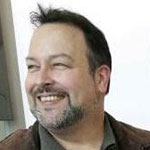
Biography:
Mike Wikan is a long time Game Industry creative leader, having developed highly successful entertainment software for Nintendo, Atari, id Software, and GTinteractive (The Metroid Prime Series and Donkey Kong Country Returns) among many others. Additionally he has worked in STEM related Software Development with partners like Sesame Workshop and the National Science Foundation. He is currently Creative Director for Booz Allen Hamilton’s IMAG group in San Antonio and creates interactive and immersive training for the US Armed Forces.
Abstract:
A discussion of the opportunities now emerging in the global marketplace for traditional Game Development, Art, and Game Design skills that are not within the traditional Videogame Entertainment Industry. Mike Wikan will address STEM, training, defense, and educational software in general, including new opportunities leveraging VR/AR Hardware to create new interactive software opportunities that will transform how the world will learn.
Matthew Johnson
University of South Alabama, USA
Title: Graphic Design in the Classroom: Adjusting to Educate the New Digital Generation

Biography:
Matthew Johnson has been a Professor of Graphic Design at the University of South Alabama for eleven years and a designer for nearly 20. He holds an MFA in Graphic Design from Louisiana Tech University, and is an internationally awarded designer, and published children’s book author and illustrator. Matthew’s experiences in the field, as well as the classroom, allow him to present confidently regarding topics of Graphic Design and computer arts. He lives for visual gratification and the ability to create. His world revolves around visual communication and the satisfaction that comes from a piece of work well done.
Abstract:
During this conference presentation I would like to address those concerns when trying to bridge the gap between being an observer of visual communications and becoming an active producer of those items. I will approach the subject primarily as it relates to the design educator and their students. In order to produce a proficient, high calibre graduate who can excel in a new digital world, educators must evolve with an ever-changing population of students. With the ease of communication and shorter attention spans affecting retention abilities, changes in the classroom setting are inevitable. The way in which information is relayed must reflect a culture where learning styles have become more interactive. We are faced with an educational pendulum that is swinging away from the lecture-and-examination style of teaching. Changes can come from anywhere along the broad spectrum of course elements. They range from small techniques to complete overhauls in classroom dynamic and management. Pulling from eleven years of personal experience in higher education I will introduce the following:
• Rethinking course structures through policies and objectives
• Team based learning through collaborative design work
• Transitioning from a print based classroom to a more digital environment
• Making visual changes to keep your materials fresh
Emphasis will be put on personal alterations that will help to rebuild a classroom into one that develops an unshakeable passion for graphic design and computer arts. An educator should feel confident that they are fueling a dedication to art and computer based creativity. Although this presentation is not centered specifically on interactive design or motion graphics it does touch on the core of Graphic Design, specifically those individuals who will influence the future of the field. Understanding the new audience is crucial to growing a stronger graphic designer and, in turn, a field that remains relevant.
Tom Berno
Texas State University, USA
Title: The Game Layer - The UX and UI of a disruptive fantasy sport startup

Biography:
Tom Berno is an experienced brand communications specialist with more than 20 years of practice in the field. His career encompasses corporate communication design, brand development, executive administration, and thought leadership in design thinking. His client experience spans a breadth of industries including Financial Services, Real Estate Development, Aerospace, Technology, Cultural & Entertainment, and Hospitality services. As a past employee at several nationally prominent design and advertising firms based in Texas, Tom continues to collaborate with them through his design consultancy; idea21.He is currently a Professor of Communication Design at Texas State University specializing in corporate brand communications curriculum for both BFA and MFA programs. He recently completed a 3-year term as Associate Director of the School of Art and Design. Tom’s design work has received extensive professional recognition throughout his career, including the noted publication Brand Identity Essentials (Rockport Publishers).
Abstract:
Online fantasy sports competition constitutes a nearly $4 billion market in the U.S. with NFL fantasy play exceeding $1.6 billion in annual revenues. Yet the international football/soccer has performed poorly by comparison. The author, part of the founding team for a startup company—English Fantasy Football—describes how an innovative new model of play capitalized on new approaches to design. The platform is undergoing a successful alpha test currently, with beta expected to be active at the start of the 2015/16 Barclays Premier League football season in England. The presentation will not only reveal the rich interface, but more importantly focus on how unmet user needs drove an integrated platform-based solution. The result creates an entirely new model of fantasy competition for the world’s most popular sport
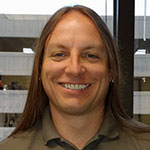
Biography:
John Carter is a 3D artist and is currently employed by Booz Allen Hamilton a government contractor for the Department of Defense in San Antonio, Texas. He attended Northwest Vista College where he developed skills in 3D animation, video special effects, game concept art and game design, as well as, traditional art skills and graphic design utilizing current industry software. John was awarded “Best in Show” at the 2011 New Vistas in Media Festival a collaboration of student technical achievements in video and media arts. Since 2012, John has served as a member of the multimedia advisory board at Northwest Vista College game development and animation department. John previously worked as an assistant to the Director of Education at Geekdom for a Rackspace hosted mobile unit offering educational enhancement projects for a STEM program. He has also worked as an adjunct faculty instructor at Northwest Vista College teaching students game design and pipeline processes. John was given the opportunity to work through a grant from Microsoft instructing local school teachers on basic programming in Kodu for later implementation in the classroom. John also volunteers his time as an instructor and mentor for the Screaming Chickens Robotic team a non-profit organization offering after school education in software technology.
Abstract:
In this talk we will address the relationship between game design and education. Training for knowledge and readiness have been at the forefront of any campaign. Time and technology has accelerated the process by which we prepare ourselves. The United States military is no exception and has hastened to catch up to technical advancements. Our armed forces are embracing the science of game design and development over traditional methods of training. These methods that have been in place for decades are getting revamped with supplemental module based training. We have come to a place where the art of game design is replacing chalkboards and complimenting text books to give an educational advantage. The fundamental elements of game design do not always apply in this regard but rather are customized to cater to the needs of the student. Game mechanics have afforded the ability to engage and immerse individuals in virtual spaces that provide room for controlled experimentation and simulation. By adapting this method of training, the student is exposed to preemptive exploratory learning in which they can apply their technical skillset.
Christopher Thibeault, Jean-Yves Hervé
University of Rhode Island, USA
Title: Event and Scene Detection for Enhancing Emulated Console Games
Biography:
Christopher Thibeault is a Ph.D. student at the University of Rhode Island and an Assistant Professor at the Community College of Rhode Island. Christopher’s research interests include image processing, computational photography, noise reduction, and super-resolution algorithms. Jean-Yves Hervé is an Associate Professor of Computer Science at the University of Rhode Island and is a founding member of the URI 3D Group for Interactive Visualization. Jean-Yves’ research interests include computer vision, modelling, and simulation, and their application to scientific visualization, robotics, and bioinformatics.
Abstract:
The audio-visual quality of video games has increased steadily over the last twenty years. The hardware of older game consoles was not capable of delivering the high-resolution graphics and sounds expected by today’s gamers. Despite this, the use of emulators to play old games continues to be very popular. To make the experience more palatable, emulators have used various forms of interpolation-based upscaling algorithms to provide a higher-resolution gaming experience. There is a limit to how much this can improve the visuals of a game. Recently, an approach based on using the virtual hardware state information inside the emulator to detect and replace game sprites proved effective in providing a substantially-enhanced set of game visuals at low computational cost. This paper investigates the modification of an existing game console emulator to perform event and scene detection to aid in the enhancement process. This will enable the system to achieve an enhancement of the audio-visual output of older games that goes beyond simply replacing sprites. It will allow for the replacement of all graphics and music assets in an emulated game in real-time. Further, it will enable the addition of new visual effects and sounds where none previously existed. All of this is done without altering the original game logic, preserving the feel of the original game. To achieve this, the state information about the virtual game console hardware is accessed and used to perform the event and scene detection at low computational cost.The system developed as part of this research uses a modified version of the FCEUX emulator for the Nintendo Entertainment System. Using this system, a substantial audio-visual upgrade is made to the appearance of a commercially released 8-bit console game, including new graphics, music, speech sounds, and lighting and fog effects.
- Computer Graphics Applications
Session Introduction
Matt Dombrowski
University of Central Florida, School of Visual Arts and Design, USA
Title: The Gamification of Modern Society: Digital Media’s Influence on Current Social Practices

Biography:
Matt Dombrowski is an Assistant Professor focusing in Digital Media at the School of Visual Arts and Design (SVAD) for the University of Central Florida based in Orlando, FL. His current line of research focuses on the melding of digital media technologies and techniques to share digital art as an interactive health tool through development of interactive physical and mental health counseling games with local mental health clinicians. Assistant Professor Dombrowski believes that the influences of digital media can be used for the betterment of our society and help positively shape its future.
Abstract:
In today’s society, how does gaming cultural while using modern digital media devices influence the causal user? Over recent years, society has witnessed the ever-growing influence and acceptance of technology and digital game concepts being incorporated in our day-to-day lives. The use of these “gamification concepts” include various psychological approaches regarding the use of technology to aid in evoking, motivating, influencing behavior, and even changing the personality of the user. Using today’s technology, users have begun to incorporate game-like point based methods to affect everything from shopping habits, education patterns and even their physical and mental personal health. With the ever-growing availability of technologies such as the Fitbit and Apple Watch, to the language learning applications Duo-lingo and Rosetta Stone, we as a society are seemingly thriving more and more on technology and gamification to influence our everyday lives. What drives us as a society to explore and accept these “seemingly empty” point based applications that influence our actions so strongly? This presentation explores the evolution of gamification in today’s society for both the good and the bad. We will delve into current, on the market applications utilizing this concept and the possible future of this approach.
Kyoung Lee Swearingen
University of Texas at Dallas, USA
Title: Story Telling Through Lighting in Animated Films
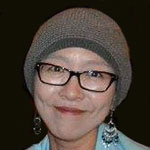
Biography:
Kyoung Lee Swearingen has worked in the film industry for the last decade on a variety of features and shorts including Ratatouille, Walle, UP, Cars 2, Toy Story 3, Brave, Monsters University, Presto, La Luna, The Blue Umbrella, Mater’s Tall Tales, Partly Cloudy, Ant Bully, and the Jimmy Neutron TV series. As a Technical Director of Lighting at Pixar Animation Studios, Kyoung focused on visual story-telling, mood, and look development through lighting. Her work has claimed numerous awards from the Academy Awards, BAFTA, Visual Effects Society, The American Film Institute, as well as many others. Kyoung received her M.F.A. from The Ohio State University, B. F. A from Savannah College of Art and Design, and B.S. in Chemistry from Sungshin Women's University in Seoul, Korea. Furthermore, she has taught at various institutes and universities throughout Korea and the United States, and is currently an Assistant Professor of Arts and Technology at UT Dallas.
Abstract:
The primary objective of lighting in animated films is to direct the audiences’ eye and not lose their attention until the film credits roll. To achieve that, maintaining continuity and establishing focal points by setting a visual hierarchy is critical to success. Another objective of lighting is to support story and emotion by creating an environment that the audience can engage in and believe the characters are a part of. To acquire this, lighters need to identify the genre of the film, portray time and place, exhibit time of day and weather, and also determine the quality of light and key light placement. Lastly, lighting adds beauty to an otherwise flat image void of shadow and atmosphere, and delivers the audience to another world. This lecture will discuss the key objectives and processes of lighting within the framework of story-telling in animated films.
Noel Lopes
Polytechnic of Guarda, Portugal
Title: GPUMLib Framework: Using the GPU to Empower Machine Learning Research

Biography:
Noel Lopes is Professor at the Polytechnic of Guarda, Portugal and a Researcher at CISUC – University of Coimbra, Portugal. Currently, he is focused on extracting information from large repositories and streams of data, using supervised, unsupervised and semi-supervised machine learning algorithms. Accordingly, a line of research being pursued, consists of developing parallel Graphics Processing Unit (GPU) implementations of machine learning algorithms with the objective of decreasing substantially the time required to execute them, providing the means to study larger datasets.
Abstract:
The amount of information being produced by humans is continuously increasing, to the point that we are generating, capturing and sharing an unprecedented volume of data from which useful and valuable information can be extracted. However, obtaining the information represents only a fraction of the time and effort needed to analyze it. Hence, we need scalable fast Machine Learning (ML) tools that can cope with large amounts of data in a realistic time frame. As problems become increasingly challenging and demanding, they become, in many cases, intractable by traditional CPU architectures. Accordingly, novel real-world ML applications will most likely demand tools that take advantage of new high-throughput parallel architectures. In this context, today GPUs (Graphics Processing Units) can be used as inexpensive highly-parallel programmable devices, providing remarkable performance gains as compared to the CPU (it is not uncommon to obtain speedups of one or two orders of magnitude). However mapping algorithms to the GPU is not an easy task. To mitigate this effort we are in the process of building an open source GPU Machine Learning Library – GPUMLib to help ML researchers and practitioners worldwide. This presentation focus on the challenges of implementing GPU ML algorithms using CUDA. Moreover, it presents an overview of GPUMLib algorithms and tools and highlights its main benefits.
Carol Luckhardt Redfield
St. Mary’s University, USA
Title: Teaching Computer Graphics by Application

Biography:
Carol Luckhardt Redfield, Ph.D. is Graduate Program Director for Computer Science and Computer Information Systems and an Professor of Computer Science at St. Mary's University. She started at St. Mary’s in 1998 after being in the computer industry for over 15 years. She specializes in computer gaming, computer-based training systems, and expert systems. She has a Ph.D. from the U. of Michigan in Computer Science and Engineering. Her thesis work was in multiplayer gaming and artificial intelligence. She has a Master’s degree in mathematics and another in control engineering. Her Bachelor’s degree is in education with double majors in mathematics and psychology. Dr. Redfield has worked for Bell Labs, IBM, LLNL, Southwest Research Institute, UTSA, and Mei Technology. She has done consulting work for WebStudy and Landmark Education. She has published 4 books and well over 50 reviewed and invited papers. She has been an invited speaker for Star Trek conventions, chaired conferences, founded a charter school, led seminars for Landmark Education, and was inducted into the San Antonio Women’s Hall of Fame. Dr. Redfield serves on committees for the National Space Society, San Antonio Space Society, John Jay Science and Engineering Academy, and Friends Meeting of San Antonio (Quakers). She plays and coaches Ultimate Frisbee. She is married to Joe Redfield, at SwRI, and has two children, Neil and Crystal.
Abstract:
The computer graphics class at St. Mary's University focuses on the application of computer graphics while learning graphics terms, some theory of how graphics tools work, and common graphics creation tools similar to Microsoft Paint, Adobe Photoshop, Adobe Flash, and Adobe Dreamweaver. Students are required to create a brand for themselves, a group, a company or an organization that they select. Inside of that brand, students create logos, a brochure, a business card, business stationary, an animation file, and a website. The website incorporates all the work that did during the rest of the class. Students learn the theory behind the graphics tools and learn how to use various tools to create the visual images to communicate a brand that they are interested in. This presentation will cover how the course is taught in a hybrid format utilizing the Blackboard learning management system. Sample projects that students created will be shown as well.
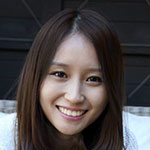
Biography:
Yvonne Cao is a graphic designer, typographer, and educator. Yvonne Cao holds an MFA in Graphic Design from Louisiana State University. Cao received her BA in Mass Communication with a concentration in TV production from Human Normal University in China 2009. In 2007, she joined in an honors exchange program at Middle Tennessee State University where she studied Electronic Media Communication. Between degrees Cao worked as a creative director in Hunan Vision International Advertising Co. in China. During her studies at LSU, Cao worked as an graphic design instructor and an active graphic designer in GDSO (Design Office). In 2012, Yvonne Cao served as an Assistant professor of Graphic design at University of Mary Hardin-Baylor, where she taught Graphic Design I & II, Typography and Interactive Design. Yvonne Cao’s scholarly interests include cross-cultural design, branding, and typography, and the history of Asian art. In her most recent research “Visual Translation", she focuses on how to facilitate a smooth visual transition in western branding by using typography. To move beyond traditional type design, her work introduces an innovative methodology for designing typefaces using existing Latin typefaces; it is created as an educational tool, which seeks to help graphic design students and type enthusiasts, with emphasis on designers who are working for cross-cultural branding. Her professional graphic design work has received recognition from AIGA (American professional organization for design) and the American Advertising Federation.
Abstract:
The visual consistency of branding makes a significant difference when successfully introduced to another culture. My study focuses on how to facilitate a smooth visual transition in western branding from Latin letters to Chinese characters. To move beyond traditional Chinese type design, Visual Translation introduces a new method for designing Chinese typefaces using existing Latin typefaces. This web-based educational tool seeks to help Chinese graphic design students and type enthusiasts, with emphasis on designers who are working in a cross-cultural environment to maintain visual consistency for branding.
David Mesple
Rocky Mountain College of Art and Design
Title: “Haptic Real-time Interactive Animation, Sound, and…â€
Biography:
David Mesple’ is an American artist who exhibits around the world. His work has been profiled in texts, magazines, music CD’s, and public television presentations. He is one of the few contemporary artists to be honored with a 2-person exhibit with one of the Masters of Western Art- Rembrandt van Rijn. He is a non-dominant left-brained and right-brained artist, capable of linear, multi-linear, and non-linear thinking, and does not compartmentalize information, nor assert that knowledge resides exclusively within certain disciplines or domains. David believes that all information lies on a spectrum of immense complexity and diversity, and is available to all problem-solvers. Mesple’ is a Professor of Art and Ideation at Rocky Mountain College of Art and Design, and is working on his Interdisciplinary PhD in “Virtuosity Studies” combining Fine Arts, Neuroscience, Physics and Philosophy.
Abstract:
I intend to show a chronology from early attempts to develop successful real-time abstract audiovisual technologies by Oskar Fischinger (1900 – 1967) to present haptic interfaces which do everything he envisioned, and more. Fischinger’s pioneering efforts in image and sound generation led to his development of the Lumigraph, an instrument which could offer audiences a one-of-a-kind audiovisual experience. The immediacy of the aural and visual effects the Lumigraph offered would lead Fischinger away from formal animation and towards his ingeniously simple Lumigraph, making a little-known but monumental statement about the degree of subtlety and expressivity attainable with an analog audiovisual performance device. Fast forward to 1999 and the pioneering work of Golan Levin, explained in his MIT graduate thesis and in his TED Talk “Software as Art”, and we see the complete manifestation of Fischinger’s vision of “Absolute Film” through digital processes. Levin’s advancements completed and expanded Fischinger’s vision to generate sound and imagery, within abstracted processes in real-time, which could create an audiovisual representation via a direct haptic interfaces . expanding opportunities for manifestating sound, image, and physical form via graphic interfaces and output devices including, 2- and 3-D visualization, CNC production, 3-D printing, and other emerging technologies.
Raphael DiLuzio
University of Southern Maine, USA
Title: Broken Cinema: Creating Digital Art with an eye and hand in time
Biography:
Raphael DiLuzio, is an Artist, Professor, Serial Creative and Director of the Ci2 SRS (Creative Intelligence Innovation Collaboration Special Research Studio) at the University of Southern Maine. As a practicing artist he considers himself a visualizer who works with traditional painting, drawing, digital, time-based and interactive media. He makes artworks that are collected and exhibited internationally. For over 25 years he has maintained a deep interest and research in understanding how the Creative Process works. In 2013 he was awarded a National Science Foundation (NSF) Grant to develop his own proprietary methodology for teaching Creative Process Thinking to Science, Technology, Engineering and Mathematics (STEM) Professors, Students and Corporate Officers and other non-Art persons. This represents an on-going focus area of his research.
Abstract:
During the Renaissance, science and art were unified. Historically, a divide occurred that separated art from the technologies and innovations of science. For over five hundred years, the creative technology available to artists changed little until two historical innovations combined. Prior to the invention of film, the tools available to visual artist were limited to creating fixed images. The invention of film changed that, although the initial high cost and cumbersome nature of the medium required an army of workers and bankers to produce major works. Initially, the invention of the computer seemed to have little to do with art. Through advancements in its processing power, and the ability to work with sound and image, computers evolved to play a fundamental and influential role art in making. The combination and evolution of computer and film technology has led to the creation time-based art. The advancement in the computer as facile and accessible tool has enabled artists to create works that embody time as a formal element for expression and narrative structure. This has altered how the viewer perceives and understands meaning and narrative in visual art. It’s caused a shift in the viewer's perceptive eye from a "silent-eye" to an "eye-in-time." This eye is readily accustomed to recognize and accept time-based imagery and narratives that, in part or whole, contain combinations and instances of montage, superimposition, variability of frame rate, duration and non-linear sequence. This talk will describe the process, elements and formal principles of working with a computer to create time-based visual art. It will examine how the creative process differs when working with an art form distinguished by temporal qualities. The discussion also covers a definition of terms specific to the medium; its structural aspects; its relation and similarities to other mediums and how its narrative structure differs from conventional cinema.
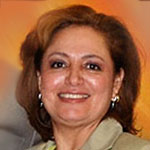
Biography:
Zoila Maria Donneys, is Associate Professor of Visual Arts in Lone Star College- Texas. She has earned a Bachelor of Arts degree in Graphic Design from Belas Artes University in Colombia, South America with an emphasis on Advertising Design. She also holds a Master of Arts degree in Literature from Saint Louis University. She has worked as a Professor in Saint Louis University in Missouri for more than 12 years. She was employed for more than fifteen years as a general manager for B&C Advertising Company and as art department Director for El Pais Newspaper Company.
Abstract:
This presentation outlines different methods to design 3D images based on 2D elements using projective geometry with some of the latest computer programs. The use of 3D images can engage the human visualization of any particular project. However, this presentation will emphasize the use of 3D scenes in consumer industrial areas such as food, agriculture, heath care, cosmetics, and pharmaceuticals. The way I will approach this study and its effects on human object perception using 2D images and projects using 3D scenes will be presenting different students and personal Industrial advertising Projects. The audience will appreciate the different techniques and possible purposes to manipulate 2D images in 3D scenes for specific commercial purposes. This presentation\\\'s ultimate goal is to present commercial and human perception reasons as to why there is increasing demand of 3D projects in education and marketing. It will be achieved by manipulation of 2D into 3D images, and comparing students and historical commercial projects.
Anna Yankovskaya
Tomsk State University of Architecture and Building, Russia
Title: Cognitive tools based on n-simplexes for decision-making and its justification in intelligent systems

Biography:
Professor Anna Yankovskaya obtained her DSc in Computer Science from the Tomsk State University in Russia. She is currently a head of the Intelligent Systems Laboratory and a professor of the Applied Mathematics Department at Tomsk State University of Architecture and Building, a professor of the Computer Science Department at Tomsk State University, a professor of Tomsk State University of Control Systems and Radioelectronics and a professor Siberian State Medical University. She is the author of more than 600 publications and 6 monographies. Her scientific interests include mathematical foundations for test pattern recognition and theory of digital devices; artificial intelligence, intelligent systems, learning and testing systems, blended education and learning; logical tests, mixed diagnostic tests, cognitive graphics; advanced technology in education.
Abstract:
Cognitive tools based on n-simplexes for decision-making and their justifications in intelligent systems are given. Intelligent systems based on the matrix way of data and knowledge representation, and on test methods of pattern recognitions, and on methods fuzzy and threshold logics, decision-making and its justification using graphical tools including cognitive tools are suggested. The idea of n-simplex application, and the theorem for decision-making, and its justification for intelligent systems were proposed by author in 1990 year. The mathematical visualization of the object under investigation mapping in n-simplex is given. Application of cognitive graphics tools based on development of the 3-simplex into sets of 2 –simplexes for decision-making and its justification in intelligent systems is suggested. Three way of decomposition of 3-simplex into set of 2-simplex are given. All ways consist of four 2-simplexes. The suggested ways of visualization is invariance to problem areas, increase quality of decision-making and allow achieving better degree justification. In this year proposed 2-simplex prism as cognitive tools for decision-making and its justification in intelligent dynamic systems for different problem areas: medicine, education, biology, physics, psychology, ecology, bioecology, etc. 2-simplex prism contain 2-simplex which disposed in base of prism and geometrical sections. Implementation intelligent subsystem of cognitive tools for visualization, decision-making and its justification based on construction 3-simpex and 2-simplex prism in intelligent instrumental software (IIS) IMSLOG are reasonable. IIS IMSLOG proposed for construction of applied intelligent system for different problem and interdisciplinary areas. IIS IMSLOG was developed in the Laboratory of Intelligent Systems of Tomsk State University of Architecture and Building.
Masoud Akbarzadeh
Institute of Technology in Architecture
ETH Zurich
Switzerland
Title: On 3D Reciprocal Diagrams and the Equilibrium of Spatial Compression/Tension-only Structural Forms

Biography:
Masoud Akbarzadeh is currently a PhD candidate at the Institute of Technology in Architecture, ETH Zurich. He is developing 3D graphical methods of structural design using 3D reciprocal diagrams at Block Research Group, ITA, ETH Zurich. He holds a Master of Science in Architectural Studies, Design and Computation, (SMArchs), and a Master of Architectural Design (MArch) from Massachusetts Institute of Technology. Previous to MIT, he received a Master of Science in Earthquake Engineering and Dynamics of Structures from Iran University of Science and Technology. Masoud has received multiple international awards including the renowned SOM award for design and research in the field of Architecture for his MArch thesis in 2011.
Abstract:
Graphical methods of structural design use pure geometric methods for design and analysis of structural forms. Being used and developed by many researchers since 19th century, these methods known as graphic statics are based on the reciprocal relationship between the form and force diagrams formulated by Maxwell. This reciprocity provides an unprecedented control in design of funicular structural forms. However, the conventional methods of graphic statics are based on 2D reciprocal diagrams, and therefore, are quite limited in dealing with 3D structural forms. The idea of reciprocity in three dimensions was originally proposed by Rankine in 1864. Nevertheless, the lack of computational/representational tools at that time prevented its further development and application. This presentation is based on a novel research that proves and illustrates the three-dimensional reciprocity between the form and force diagrams 150 years from its original proposition. It shows that the design and analysis of complex, spatial funicular structural forms does not require sophisticated algebraic methods and can be achieved by pure geometric constructions. According to this research, the equilibrium of a 3D system of forces that is in pure compression/tension can be represented by a (group of) closed, convex polyhedral cell(s) with planar faces. This research clarifies the topological and geometrical relationships between the components of a system of forces (a polyhedral frame) and its reciprocal force diagram (polyhedron). Additionally, it provides a computational approach to construct a form diagram from a given group of convex force polyhedrons and vice versa. To further emphasize the potential of the application of this method in design, research, and practice, this presentation provides examples where manipulation of the force diagram results in generation of novel spatial structural forms. In conclusion, it shows how the reciprocity between the form and the force diagrams in three dimension can be used to extend existing 2D methods of graphic statics to 3D, and therefore, open a new horizon in the field of structural design, architecture, and computer science.
Tanzila Saba
Prince Sultan University in Riyadh, Saudi Arabia
Title: Innovative Technologies and Applications of Computer Graphics
Biography:
Dr. Tanzila Saba earned PhD in Document’s Information Security and Management from Faculty of Computing Universiti Teknologi Malaysia (UTM), Malaysia in 2012 and also won best student award in the Faculty of Computing UTM 2012. Currently, she is serving as Assistant Prof. in College of Computer and Information Sciences Prince Sultan University Riyadh KSA. Her research interests include intelligent data mining, forensic documents analysis & security. She is author of around 100 resrach articles and her more than thirty research papers are ISI/SCIE indexed. She is member of IEEE, TWAS & IFUW. Due to her excellent research achievement, she is included in Marquis Who’s Who (S & T) 2012.”
Abstract:
This presentation will highlight the current innovative technologies and applications in computer graphics. As we all are well aware that computer graphics has successful applications in all aspects of life. Currently it really proves a common proverb “ a picture is better than thousand words”. Its applications could be found on television, newspapers, all sorts of advertisements. Its particular applications are in weather forecasting, animations, animated movies, medical cure and treatment. A well-constructed graph is a successfully present complex data in such a manner that is simple to understand and interpret even for a common person. In the electronic and paper media, graphics are employed to provide comparison of achievements in all sectors of enterprises to attract new business. Currently, several innovative tools are available in the market to visualize data. This visualization could be categorized into several different types: two dimensional (2D), three dimensional (3D), and , however are high processer demanding. Therefore, 2D computer graphics are still acceptable and applicable. Computer graphics are emerged as a sub-area of computer science which studies methods for digitally synthesizing and manipulating visual content. Over the past decade, other specialized fields have been developed like information visualization, and scientific visualization more concerned with "the visualization of three dimensional phenomena (architectural, meteorological, medical, biological, etc.), where the emphasis is on realistic renderings of volumes, surfaces, illumination sources, and so forth, perhaps with a dynamic (time) component". The most common applications of computer graphics are 3D projection, Ray tracing, Shading, Texture mapping, Anti-aliasing, Volume rendering, 3D modelling.
Biography:
Waqas Hussain has completed his Bachelor’s degree from Air University, Islamabad. His research paper managed to attain 3rd position in the The International Conference on Energy Systems and Policies (ICESP-2014). He developed 3D-Model for World Wide Fund an UK based organization. He presented his research papers in different international research based conferences (Turkey, Dubai and Pakistan). Currently, we have minimum one million hospitals all over the world but none of them have an application catering to sperm morphology. So, now, he is working on this idea using Computer Graphics and Computer Vision algorithms.
Abstract:
Currently, we have minimum one million hospitals all over the world but none of them have an application catering to sperm morphology. Microscopic evaluation of human sperm quality is a basic requirement of any diagnostic fertility service, assisted conception (IVF) centre or pathology laboratory. Human Sperm is evaluated in terms of three key features, namely concentration (sperm count), motility (sperm speed) and morphology (individual sperm shape). Conventional manual microscopic analysis of sperm samples is time consuming (1-2 hours) and lacks accuracy and reproducibility in many IVF centres. Motility and concentration are handled with variable degrees of efficiency but morphological or individual sperm health and abnormality detection is still missing from the automated software tools. The manual testing for morphology in labs according to World Health Organization (WHO) standards is labelled flawed by the andrology and fertility researchers due to the following problems: • A dye has to be injected in the immobilized sample so the microscope can pick the sperms heads well at 1000x magnifications using oil immersion. The dye may transform the natural morphological characteristics of the original cells. • Too much time has to be consumed as 1000x magnification means looking at only a couple of sperms per slide. And if we follow WHO standards at least 200 sperms have to be analysed, so a lot of images form the microscope have to be taken and processed. We propose a sophisticated solution which analyses the immobilized sperms at 200x magnification without injecting a dye in. This work is highly appreciated and recommended by many hospitals in UK and we have 2 recommendation letters from 2 major hospitals from the United Kingdom. The physical analysis of the sperm involves the study of: •Head •Mid Portion •Tail characteristics. Objectives: The following are the objectives of the present study: •To analyse sperms samples at lower magnifications to get more sperms in the image and save time •To write image processing and computer graphics algorithms to detect sperms without the injection of chemical dye which messes with their natural morphology. •Automatically divide the sperm in 3 major parts namely head , mid-piece and tail •Find the head abnormalities using machine learning techniques •Find the neck and tail defects using tracking algorithms and some structural analysis techniques mentioned in a Bioinformatics paper.
Sumedh Ojha
Rajasthan Technical University, India
Title: One on One: A Completely New Individual Cricketing Style and Game Design
Biography:
Sumedh Ojha is a student of Bachelor of Technology in Computer Science stream from Poornima Institute of Engineering Technology, Jaipur, which is affiliated to Rajasthan Technical University, Kota, Rajasthan
Abstract:
One on One - (A New Cricketing Style) is an upcoming completely new style of playing the game of cricket. It is a unique game design which is based upon a rule book, i.e., One On One – Rule Book. The rule book consists of 5 basic laws divided as (1) The Players, (2) The Game, (3) The Batting Order, (4) Miscellaneous, and (5) The Score, with a total of 15 rules in it. In this game, every single player plays for himself instead of a team. The idea of “One on One” presents cricket in an all new style. It is based upon, or rather an advanced version of the game of cricket that is played in the streets of India. It is a game of 12 individual players who compete for a single winning Title. The winner is selected on the basis of an all-round performance by an individual player in each of the four skills, i.e., batting, bowling, fielding and wicket keeping. It brings out the true talent of a cricket player as an all-rounder and increases the momentum of the game of cricket in the field of sports. The online version of the game shall have some amazing features as it shall have a capacity of involving 12 individual players in a single game. Creating a game offline is one thing, Crickalympics shall have the online features such as: • A user may create a game, join an existing game or can wait to be added as a participant in the game by the host user. One shall even be allowed to publish one’s highest scores and place bids on the highest scorers. • The bidding part is the most essential feature. The game is to be played in a tournament. The tournament shall consist of squads which shall be owned by the individual users. Yes, one shall have the option of creating one’s own squad as one wins the games. As a user keeps winning, the user shall be able to unlock more features for one’s self. • As the game is an individual game, the players shall have full control over the players in the game. One shall be provided with the features of controlling a player during batting, bowling, fielding and wicket keeping. These are essentially revolutionary features.
Bryan Jaycox
Founder at The Build Shop
Title: The Rise of 3D Printing and the Digital-Physical Reality
Biography:
Bryan Jaycox is the Founder and Owner of The Build Shop, LLC, a makerspace in the heart of downtown Los Angeles. The Build Shop was the first of its kind in the Los Angeles area to provide walk-in training and DIY fabrication through high-end commercial 3D Printers and Laser Cutters. The Build Shop provides opportunities for highly localized manufacturing that enables anything from prototyping and mass production for small businesses to simply creating a customized gift for your grandmother. Prior to this Bryan’s career spanned over a decade in 3D graphics, virtual reality, video games, and serious games, at companies such as the Mixed Reality Lab at USC’s Institute for Creative Technologies, The Virtual Reality Medical Center, and LucasArts.
Abstract:
For years we have seen the impact of the digitization of our world, the ability to take the information of a thing and manipulate it as fluidly as a sequence of numbers on a computer. Only now are we beginning to see the impact of this digitization come back full circle and begin to remake our physical world in the same way as it manipulates bytes in the computer. The dream of the Star Trek replicator is fast becoming a reality of our modern day world as the barriers of speed, cost, and material types are quickly being thrown aside to create a new era of 3D Printed goods that could upend our entire economic infrastructure for manufacturing and consuming goods. Imagine a world absent of retail stores, shipping services, and centralized manufacturing and you get a glimpse of the changes in-home 3d printing have the potential to bring to a future economy. From 3d printed food, to organs, to homes, to rocket engines see how this amazing technology is beginning to reshape our world in more ways than we can possibly imagine. Discover the state of the art technology of today, where the industry is heading, and the most promising advances happening today to improve speed, cost, and are rapidly making this technology viable as the “Build Anything” machine of the future.
- Prospects and Challenges of the Animation Industry
Session Introduction
Jan Nagel
Entertainment marketing professional
Title: Animation studios: Intellectual property development and production services

Biography:
Jan Nagel has worked as an entertainment marketing professional since 1991 with recognized and award-winning feature and television production studios, including Dream Quest Images, Calico Entertainment and Virtual Magic Animation. As a consultant and business owner, she brings her experience and expertise to clients such as Original Force 3D in Nanjing China, Maya Digital Studios in Mumbai, India, Santo Domingo Films in Mexico, Pandoodle in Silicon Valley, KOCCA USA (Korean Content and Cultural Agency), Anya in Bangkok, Rocket Fish in Malaysia, Rhythm & Hues and other animation and visual effects companies. Prior to her entertainment-marketing career, she worked for Fortune 500 advertising agencies, providing advertising and recruitment marketing for client, such as U.S. Army, Hughes Aircraft and Century 21 Real Estate, and served as associate publisher for four career magazines. She is currently an Adjunct Professor at University of Southern California, teaching the Business of Animation in the graduate animation program. As a Senior Lecturer at Otis College of Art + Design, she teaches a yearlong course in business and career development to digital media seniors. As an Adjunct Professor, she teaches an online course for the Academy of Entertainment and Technologies at Santa Monica College. She has presented at the International Forum on China Cultural Industry in Shanxi Province, China, KidScreen Summit, UCLA Extension for KOCCA USA and USC Master’s Program.
Abstract:
Part 1: Animation Production Services- The most important part of a design, animation or digital media studio is the service it can provide to outside producers. This will bring in the income to support the overhead and the labor to keep the doors open. Most studios have the talent pool and desire to express their own creativity in the way of developing original content. Providing production services could support these endeavors. A successful studio will be able to offer a myriad of services, from character and environment design, to storyboarding and layout. From modeling and rendering to the actually making the characters move. In this portion of the master class, we will review what international producers are seeking in a production services.
• Labor Pool: Skills and Talent • Genre Specialties: Game, Television Animation, Feature Film Animation, VFX, and more • CGI vs. 2D/Traditional: The Different Pipelines • Art Skills and Computer Skills
Part 2: Intellectual Property Development- Content creation is a business. Stories are created for television, feature film and home entertainment. Animation can be “evergreen” and remains successful for much longer than many live action productions. Animation can move from country to country, from language to language with every little effort. Animation is an expensive process, but animation is a method that allows stories to appeal to large and wide audiences. This means the potential for a return on investment is greater for an animated story.
• Business of Content Development • Acquisition vs. Development • Distribution: Broadcasters and Network vs. Distributor • Co-Production Partnerships • Co-Ventures • Treaties, Tax Incentives and Economic Value • Licensing and Merchandising
Tariq Alrimawi
University of Petra, Jordan
Title: The challenges that face the Arab Animation Cinema
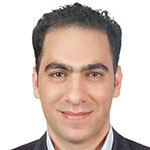
Biography:
Tariq is a Jordanian animated film director. His first degree, which was obtained in 2006 from the University of Petra, Jordan, was in Graphic Design. In 2010, he graduated with a Master’s Degree in Animation from Newport Film School in the United Kingdom. His graduation stop-motion film entitled Missing has screened at more than 100 international film festivals including the Academy Award Qualifying Festivals, the Tokyo Short Shorts International Film Festival and the Chicago International Children's Film Festival. The film has also received 12 awards domestically and internationally. In 2014, Tariq completed his PhD studies about Arab Animation Cinema at The Animation Academy, Loughborough University in the United Kingdom. Currently, Tariq is an Assistant Professor at the Graphic Design Department at the University of Petra. To see more of his projects: www.tariqrimawi.com
Abstract:
Arab filmmakers attempt to export their animated films to an international market, and try to speak to other global cultures. They seek to build a bridge between the Arab world and the West through animated films which have been adapted from Arab and Islamic sources, but speak to the universal human condition. The relationship between Islam and the West, though, remains very complicated; the West looks at these projects and already has a perspective about them as religious and ideological propaganda, especially after 9/11, 2001. Thus, the majority of these Arabic animated films are rejected by the West because of concerns that these films represent the unwelcome principles of foreign cultures. Inherently, there is an Islamophobia about Islamic cultural products as soon as they come to the West; there is suspicion of them and extensive interrogation of them. Ironically, when Western artefacts are exported to Arab countries, though almost inherently at odds with Muslim ideology and Muslim politics, they sometimes find distribution and audiences. The consequences of this relationship between Arab countries and the West is not only ideological, however, and also concerned with the fact that Arab filmmakers and producers face economic challenges, and a number of Arab animation studios went out of business or stopped making more feature animated films due to the difficulties of reaching international marketplaces. Thus, the focus of contemporary Arab animation is mostly low budget projects distributed through YouTube and social media, which became the main platform for Arab animation artists to distribute their political works during the 'Arab Spring' in Tunisia, Egypt, Libya, Yemen, Syria and elsewhere in the Middle East since 2011.
Biography:
Slade is a self-taught 3D animator and motion graphics artist. He also is a guitarist in a national rock band and a recording engineer and producer. He works as a "one man" show and has the skill sets to take an idea, concept or storyboard idea and create every portion of the animation to the final delivery of the completed animated movie. He lives and works in Houston, TX and is currently the Animation Director for the Houston Museum of Natural Science (HMNS). He has worked in many different areas of the industrial, from the commercial, entertainment side to the industrial side. He is constantly pushing his boundaries and skill set in order to produce higher quality animations and speed to meet some of today's unrealistic client's needs. He has been able to deliver more than what has been expected and this has enabled him to get his work noticed throughout the industry. He continues to strive to improve everything that he does, throughout his life.
Abstract:
I have always been the type of person to do things my own way. If I buy a product, I have to customize it; I have to make it personal. I have to create on a daily basis. I have to feel productive. I love working in a team but it seems like I have always been lead back to doing projects from start to finish, by myself. This is very rewarding to be me but it can be far more time consuming without help. In the end, you become more valuable because you have the skillsets of multiple people and you are constantly pushing yourself to become an increasingly better artist and creative thinker. This again translates to value, which translates to dollars because, let's face it, we have to work to pay the bills. It is much more rewarding to be able to do what you love, on a daily basis and earn a nice living. This is what all I will be discussing about: The "one man (person)" show - finding your niche. It is an open talk about as: “How did I do this? How can you do this?” Unleash your Creativity at CG 2015
